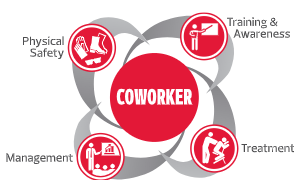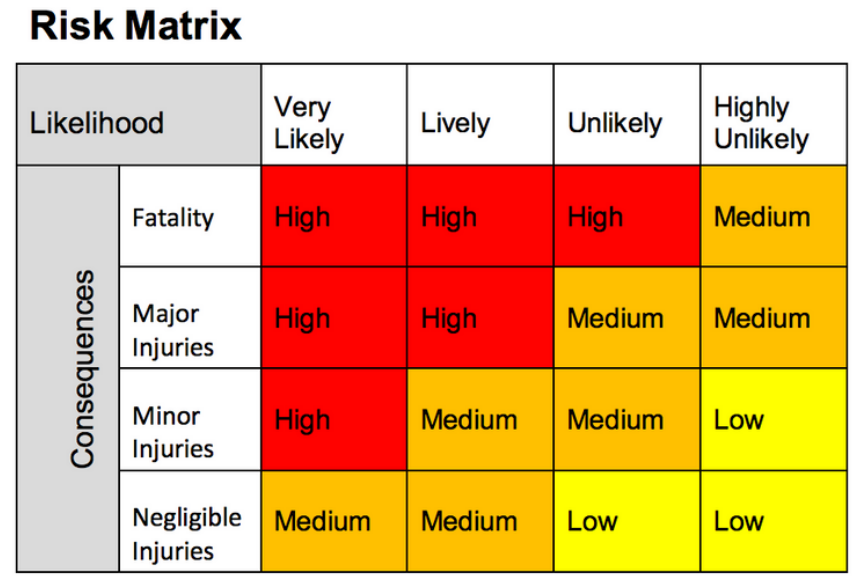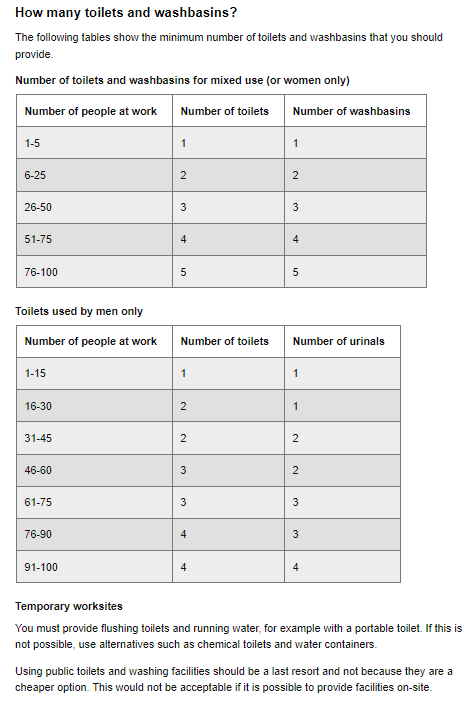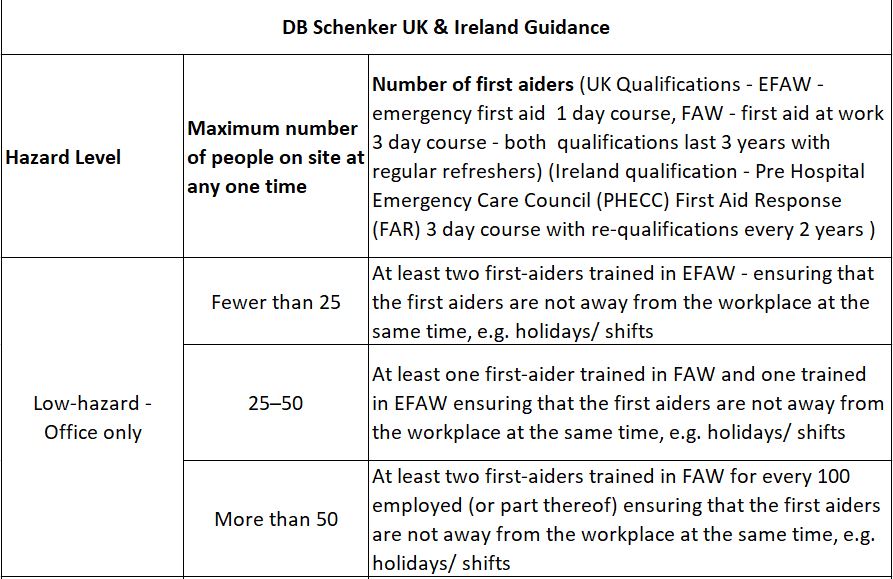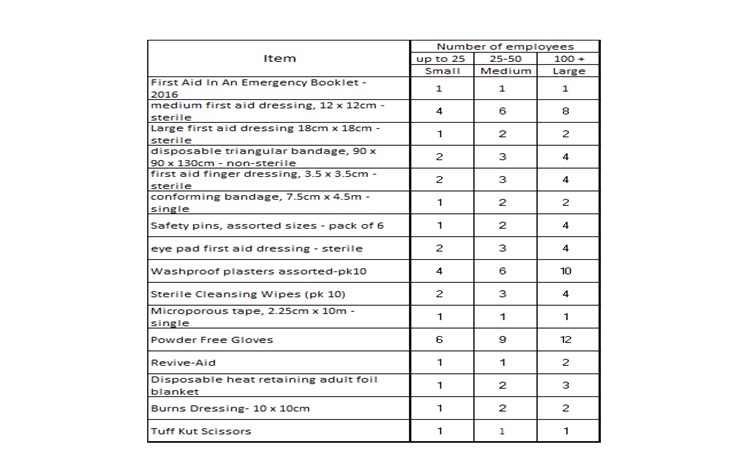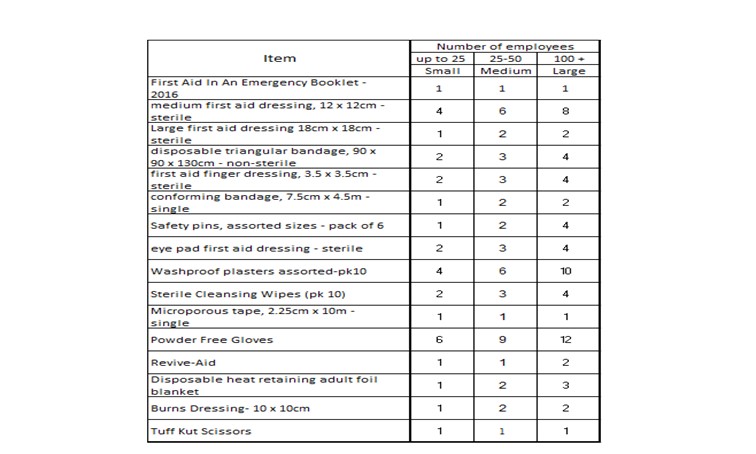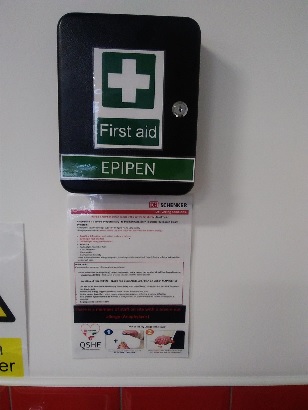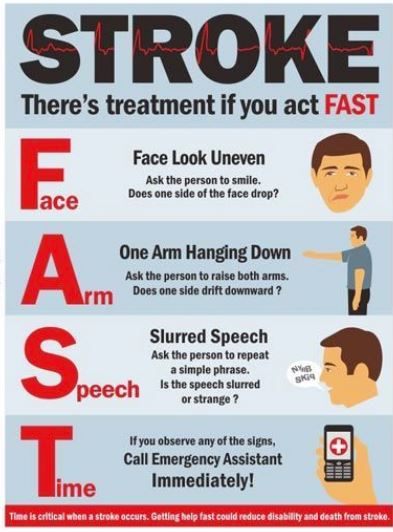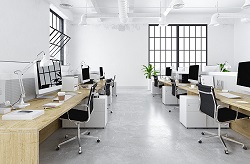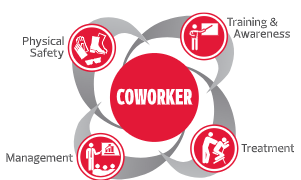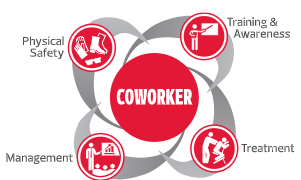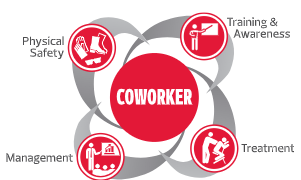Title Page
-
Office Name
-
Address
-
Multi tenant?
-
What floor(s) does CDW occupy?
-
How many floors does the site have?
-
About how many coworkers work at this location currently?
-
Conducted on
-
Conducted by
References
-
Risk Matrix Reference
-
Hierarchy of Controls Reference
Workplace Facilities
Workplace Facilities
-
Are there sufficient toilet facilities near to work areas,with separate hand washing facilities and an adequate supply of hot water,soap or hand cleaners?
-
-
Are toilet and washing facilities regularly cleaned and in a sanitary condition?
-
Is a clean locker room provided for changing clothes,with facilities for separating soiled working clothes from personal clothing?
-
Is there a comfortable separate room for workers to take rest breaks?
-
Is there a separate rest room (or area of the rest room)for nonsmokers?
-
Is there a rest room for pregnant women and nursing mothers,near to sanitary facilities and with somewhere to lie down?
-
Is there an adequate supply of fresh drinking water?
-
Is there a separate,hygienic and comfortable eating area which is adequate for the numbers employed?
RIDDOR- Reporting of Injuries, Diseases and Dangerous Occurrences Regulations
Coworker injury cases
-
Who handles/tracks injury cases?
-
Who are injuries reported to?
-
What system is used to document injury cases?
-
How is insurance handled/Is there employer liability insurance? Through Who?
-
How are corrective actions and preventative action tracked?
-
Is management involved/do they know the safety records?
-
Are goals/incentives in place to promote safety?
Safety Training
-
How is Safety training conducted?
-
Who conducts Safety Training?
-
What kind of Safety Training is provided and when?
-
Do new hires receive Safety Training and what does that entail?
Fire Safety/Prevention
Fire Safety Equipment
-
Who handles Fire Related Safety Maintenance?
-
Written record of fire risk assessments kept. There is a log book to record tests and maintenance
-
Those in the building who are at risk (special needs: pregnant, wheel chair etc.) are identified
-
Fire extinguishers are mounted in an easily accessible location with no debris or material stacked in front of them
-
All extinguishers are mounted on the wall (the top of the unit must be no higher than 3.5 feet)
-
The extinguishers (tag valid), fire alarm panels, and fire sprinklers have been serviced and inspected within the previous 12 months
-
No signs of leakage, physical damage or corrosion on any of the equipment
-
Label, extinguisher type, and instructions are easy to read? Safety pins are in place & intact and Handle is not broken?
-
Pressure gauges are in the green and is not damaged or showing “recharge”
-
Location of extinguisher is easily identifiable by signs
Exit Routes
-
Aisles are unobstructed
-
The paths to the exits are well lit and clearly marked
-
All doors to fire exits can be easily opened in case of emergency
Data Center Room, IDF/MDF Room
-
HVAC systems in room to maintain a cool environment for servers
-
Fire suppression system working and inspected within the last 12 months
-
No moisture or water intrusion present
-
No combustible material stored in the room
-
No stored material in the room blocking electrical equipment (36" clearance) or fire sprinklers (18" clearance)
Office furniture, shelves, cabinets
Furniture & Office Equipment
-
In good mechanical condition
-
Properly assembled and adjusted
-
Items secured from tipping
-
Free from sharp edges and corners
Bookcases, Shelves & Cabinets
-
Secured from tipping
-
In good condition
-
Drawers closed when not in use
-
Material safely stacked and stored
-
Step stools/ ladder available if needed
Ergonomics- Working with DSE (Display Screen Equipment) & Managing ULD (Upper Limb Disorders)
-
Ergonomic equipment available for the workstations.
-
Is there DSE user training training/assessment provided? How is it provided?
-
https://www.hse.gov.uk/pubns/indg36.pdf
Seating
-
Ergonomic chair used (armrests, vertically adjustable, on a 5-point base, lumbar support)
-
Kind of Chair used (Herman Miller, etc.)
-
Desk has sit stand capability.
Monitor
-
There is a monitor arm.
-
The screen is directly in front of coworker (no twisting of head and neck).
-
Top line of screen at or slightly (0-30 degrees) below eye level.
-
The monitor located at least arm's length away.
-
One can clearly read the screen without bending head, neck or trunk forward/backward.
-
Is the monitor in a location that eliminates glare on the screen which might cause one to assume an awkward position to read screen? (Answer "safe" if there is any glare on your screen)
-
The screen placed at right angles away from windows and task lights to avoid glare and bright light directly behind the screen.
Keyboard & Mouse
-
There is a keyboard tray.
-
There is weight bearing support for your arms (chair arm or wrist rest) when you are using your keyboard and mouse.
-
The mouse location allows you to keep your upper arm and elbow close to body (arm not extended outward beyond 45 degrees).
-
The placement of the mouse allows for a neutral wrist posture so your hand is in a straight line with forearm (not bent up/down or sideways toward little finger).
Other
-
There is adequate desktop space available to perform job tasks without twisting, side vending, or reaching.
-
There is enough clearance for ones feet, knees, and legs.
-
There is adequate space that allows one to swivel your chair (without leg obstruction) to perform work tasks.
-
For those whose job requires frequent telephone use, a headset is provided to use when phone communication is combined with hand tasks such as typing and writing.
-
If job requires frequent viewing of documents, a document holder provided to hold documents in a vertical position.
-
The document holder (if provided) is placed at about the same height and distance as monitor screen.
-
Computer workstation, components and accessories are maintained in serviceable condition and function properly.
-
Correct ergonomic workstation setup guide posted?
Emergency Management & Response
-
Designated Severe Weather Shelter Areas exist (Away from windows, external walls, clearly marked)?
-
Are there designated Emergency Response Team (ERT) members?
-
Is the ERT up to date and accurate with who is on site?
-
All emergency exits are lit and properly marked?
-
There is an emergency plan readily available for staff to read?
-
Is the emergency plan available to enforcing authority?
-
Coworkers know and are trained on the evacuation procedures?
-
Emergency Maps posted and up to date?
-
Designated Evacuation Assembly area(s)? Located at safe distance(s)?
-
Emergency contact list up to date?
-
Last time the facility had a drill?
Facility Information and First Aider requirements
-
Type of facility and risk level.
-
Office facilities are deemed "Low-Hazard" according to HSE Guidance. Taking this into consideration - the following requirements are required by in office based facilities. ( UK terminology - EFAW - emergency first aid 1 day course, FAW - first aid at work 3 day course - both qualifications last 3 years with regular refreshers.)
-
Maximum number of people on site at any one time (please consider visitors and guests)?
-
At least two first-aiders trained in EFAW - ensuring that the first aiders are not away from the workplace at the same time, e.g. holidays/ shifts.
-
Are there sufficient and suitable trained staff to cover the needs of the site?
-
Site management should make immediate arrangements for suitable staff members to be trained to a suitable level depending on the needs of the site
-
List the names of first aiders here
-
At least two first-aiders trained in EFAW - ensuring that the first aiders are not away from the workplace at the same time, e.g. holidays/ shifts
-
Are there sufficient and suitable trained staff to cover the needs of the site?
-
Site management should make immediate arrangements for suitable staff members to be trained to a suitable level depending on the needs of the site
-
List the names of first aiders here
-
At least one first-aider trained in FAW and one trained in EFAW ensuring that the first aiders are not away from the workplace at the same time, e.g. holidays/ shifts
-
Are there sufficient and suitable trained staff to cover the needs of the site?
-
Site management should make immediate arrangements for suitable staff members to be trained to a suitable level depending on the needs of the site
-
List the names of first aiders here
-
At least two first-aiders trained in FAW for every 100 employed (or part thereof) ensuring that the first aiders are not away from the workplace at the same time, e.g. holidays/ shifts
-
Are there sufficient and suitable trained staff to cover the needs of the site?
-
Site management should make immediate arrangements for suitable staff members to be trained to a suitable level depending on the needs of the site
-
List the names of first aiders here
-
At least two first-aiders trained in FAW for every 100 employed (or part thereof) ensuring that the first aiders are not away from the workplace at the same time, e.g. holidays/ shifts
-
Are there sufficient and suitable trained staff to cover the needs of the site?
-
Site management should make immediate arrangements for suitable staff members to be trained to a suitable level depending on the needs of the site
-
List the names of first aiders here
-
Facilities with a warehouse are deemed "Higher-Hazard" according to HSE due to the nature of work that occurs (Use of Machinery, FLT/PPT's, Movement of Dangerous Goods etc). Taking this into consideration - the following requirements are required in high risk facilities. (EFAW - emergency first aid 1 day course, FAW - first aid at work 3 day course - both qualifications last 3 years with regular refreshers)
-
Maximum number of people on site at any one time (please consider visitors and guests)?
-
At least two first-aiders trained in FAW - ensuring that the first aiders are not away from the workplace at the same time, e.g. holidays/ shifts (This can include office trained first aiders)
-
Are there sufficient and suitable trained staff to cover the needs of the site?
-
Site management should make immediate arrangements for suitable staff members to be trained to a suitable level depending on the needs of the site
-
List the names of first aiders here
-
At least two first-aiders trained in FAW ensuring that the first aiders are not away from the workplace at the same time, e.g. holidays/ shifts. (This can include office trained first aiders)
-
Are there sufficient and suitable trained staff to cover the needs of the site?
-
Site management should make immediate arrangements for suitable staff members to be trained to a suitable level depending on the needs of the site
-
List the names of first aiders here
-
At least two first-aiders trained in FAW ensuring that the first aiders are not away from the workplace at the same time, e.g. holidays/ shifts. (This can include office trained first aiders)
-
Are there sufficient and suitable trained staff to cover the needs of the site?
-
Site management should make immediate arrangements for suitable staff members to be trained to a suitable level depending on the needs of the site
-
List the names of first aiders here
-
At least two first-aiders trained in FAW and two trained in EFAW for every 50 employed (or part thereof) ensuring that the first aiders are not away from the workplace at the same time, e.g. holidays/ shifts (This can include office trained first aiders)
-
Are there sufficient and suitable trained staff to cover the needs of the site?
-
Site management should make immediate arrangements for suitable staff members to be trained to a suitable level depending on the needs of the site
-
List the names of first aiders here
-
At least two first-aiders trained in FAW and two trained in EFAW for every 50 employed (or part thereof) ensuring that the first aiders are not away from the workplace at the same time, e.g. holidays/ shifts (This can include office trained first aiders)
-
Are there sufficient and suitable trained staff to cover the needs of the site?
-
Site management should make immediate arrangements for suitable staff members to be trained to a suitable level depending on the needs of the site
-
List the names of first aiders here
-
Are any of the trained First Aider's due for a training refresher course in the next 12 months
-
Site management should arrange refresher training or identify an alternative staff member for this role.
-
Are the evacuation posters (including locations of First Aid Kits) displayed around the facility and does the visitor leaflets have the locations of the First Aid Points displayed?
-
A Review of your posters, site maps with First Aid Kit locations, should be reviewed and when complete displayed around the site.
-
Please add images as evidence of information points.
-
Are there an adequate number of First Aid Kits/Consumables/Eye wash stations? Are they located at suitable locations determined by the activity in that area.
-
Contents of the first aid kit is based on best practice taken from BS8599. Monthly first aid checks are required to ensure the correct equipment and quantities are maintained as a minimum. (Ensuring that they are within their expiration date). Locations of First Aid Kits should be readily communicated on the Branch Emergency Plans, Evacuation Posters and visitor guides amongst others as well as physical signage within the site.
-
Contents of the first aid kit is based on best practice taken from BS8599 and the Health and Safety Authority (HSA) IE. Monthly first aid checks are required on form QSHE 141 First Aid Check List to ensure the correct equipment and quantities are maintained as a minimum. (Ensuring that they are within their expiration date). Locations of First Aid Kits should be readily communicated on the Branch Emergency Plans, Evacuation Posters and visitor guides amongst others as well as physical signage within the site.
First Aid Boxes
-
First aid box(es) available and in good condition?
-
How many First Aid boxes total?
-
All first-aid boxes should have a white cross on a green background. Similarly, first-aid rooms should be easily identifiable by white lettering or a white cross on a green background.
-
Who checks the First Aid box(es)?
-
How often is the First Aid box(es) checked?
-
Sufficient supplies<br>*See Link below for First Aid Box Requirements*
-
https://www.cs-compliance.co.uk/update-british-standard-for-workplace-first-aid-kits-bs-8599-12019/#:~:text=The%20new%20standards%20(BS%208599,scissors%20and%20fewer%20triangular%20bandages.
-
First aid boxes DO NOT contain prescription or over-the-counter tablets/medications such as aspirin, Ibuprofen, decongestants, sinus relief, etc. due to not being first aid/ liability risk.
-
Is there any defective item/s?
-
Is there anything out-of-date/expired?
AEDs
-
At least 1 AED on each CDW floor
-
Number of AEDs on CDW floors at the site total:
-
What kind of AEDs are utilized?
-
AEDs inspected monthly and in good condition (pads not expired, no missing supplies)
-
Who inspects the AEDs at the site?
Special Requirements
-
Does the facility have any high risk colleagues?
-
Staff with a lack of experience/maturity may inadvertently place themselves and others at higher risk. Staff in these circumstances must not be exposed to or be given responsibilities for higher risk activities until a suitable time allowing for training programs to be completed and experience/maturity is acquired.
-
In accordance with QSHE SOP 006 Risk Assessment Process, Form QSHE 169 Expectant mother risk assessment must be completed by competent/trained member of staff. Dependent on the type of role performed additional risk assessments (Office - QSHE 188 DSE) (Warehouse - QSHE 195a Manual Handling Assessment) must be completed. When completed, these assessments are to be shared with their line management and HR and are to be treated with high confidentiality in line with the GDPR requirements.
Health Issues
-
Are any colleagues affected by high risk health conditions
-
It is advised that those afflicted with a health condition raise this with their first aiders so that will help with preparation if they require emergency support. Colleagues with health conditions must adhere to the advice offered by medical professionals, self manage themselves with medication (if required). If there are any deterioration of a colleagues condition, they must advise staff members who will seek out First Aid assistance
-
Are any colleagues effected by higher risk health conditions?
- Asthma
- Heart conditions/ chest pains
- Seizures
- Severe allergies
- Stroke
-
Asthma. It is advised that any colleague with a asthma should inform a first aider. This could include location of any medication/ inhaler that may help the colleague during an emergency situation. If there are any deterioration of a colleagues condition, they must advise staff members who will seek out First Aid assistance.
-
Heart Condition/Chest Pains. It is advised that any colleague with a history of heart conditions should inform a first aider. This could include location of any medication that may help the colleague during an emergency situation. If there are any deterioration of a colleagues condition, they must advise staff members who will seek out First Aid assistance.
-
Seizures. It is advised that any colleague with a seizures should inform a first aider. This could include location of any medication that may help the colleague during an emergency situation. If there are any deterioration of a colleagues condition, they must advise staff members who will seek out First Aid assistance.
-
Severe allergies. It is advised that the colleague with sever allergies inform a first aider of the location of Epipen if this is required. The colleague must inform providers of external food entering the site, for example lunch orders, of their allergies . If there are any deterioration of a colleagues condition, they must advise staff members who will seek out First Aid assistance.
-
Stroke. If there are any deterioration of a colleagues condition, they must advise staff members who will seek out First Aid assistance.
Environmental
LIGHTING
-
Are all areas of the workplace, including relevant outside areas adequately lit?
-
Have excessive glare and reflections been eliminated?
-
Are workstations properly positioned to make the best use of natural light?
-
Is local lighting provided to workstations where necessary?
-
Is emergency lighting provided,with an independent power source which activates automatically when normal lighting fails?
-
Does emergency lighting provide enough light?
NOISE
-
Is the workplace too noisy?
-
Is noise reduced at source by the provision of properly designed,well maintained and adjusted tools or machines?
-
Are noise levels reduced by the use of sound-absorbent materials?
-
Can the source of any excessive noise be enclosed or isolated?
-
Is suitable hearing protection provided if noise levels cannot be reduced by any other means?
TEMPERATURE,VENTILATION &EXTRACTION
-
Is the workplace too hot or too cold?
-
Can measures be taken to control temperature extremes?
-
Is there enough natural ventilation in the workplace,e.g. windows or open doorways?
-
If natural ventilation is insufficient, are ventilators, fans or air conditioners provided to ensure a consistent flow of fresh air?
-
Is machinery and equipment which generates heat or fumes isolated or enclosed?
-
Are adequate extraction systems fitted to machinery or equipment, or is local exhaust ventilation provided where necessary?
-
Are ventilation and extraction systems regularly cleaned and maintained to ensure their efficiency?
Housekeeping/ Slips, Trips & Falls
-
All stairs with four or more steps are equipped with handrails?
-
Carpets are well secured to the floor and free of frayed or worn seams?
-
Surface dust levels low?
-
The waste containers are sufficient and there is no overflowing garbage?
-
Floor and aisles are free of litter and spilled liquids (water, pens, paper, etc.)?
-
Aisles are free of cords, boxes, chairs and other tripping hazards?
-
Desks or file drawers are closed when not in use and only one drawer is used at a time?
-
Are office areas cleaned & maintained regularly?
-
What is the name of the cleaning company?
-
Are storage rooms & recycling areas neatly maintained?
-
The area is tidy and well kept?
-
Walkways free of obstacles?
-
REFERENCE: This walkway is free from obstacles
[This is an example of how you can use iAuditor to include best practice reference images in your templates to assist with inspections] -
Cords anchored or covered?
-
Floor coverings in good condition?
-
Signage posted if floors are wet?
HOUSEKEEPING AND WASTE MATERIALS
-
Take a photograph of the area inspected.
-
Is the workplace kept generally clean and tidy? (0 - Poor / 10 - Excellent)
- 1
- 2
- 3
- 4
- 5
- 6
- 7
- 8
- 9
- 10
-
Are appropriate and convenient storage racks provided for tools, raw materials,parts and products?
-
Are oil spills and other slips, trips and fall hazards promptly cleaned up or removed?
-
Are all work areas cleaned and tidied up daily (or more frequently if necessary),with all hazardous waste materials disposed of properly?
-
Are there enough waste receptacles or containers of adequate size?
-
Is there provision for proper drainage of waste water or other liquids?
Electrical Safety
ELECTRICAL SAFETY
-
Are there any exposed, loose or entangled wires or connections?
-
Are all switchboxes,panel boards and sockets provided with suitable covers?
-
Is all electrical equipment effectively earthed?
-
Is all electrical equipment regularly inspected for signs of wear and tear?
Parking Lot
-
Is the parking lot clear of debris?
-
Are sidewalks, ramps and walking surfaces in good repair?
-
Are mirrors or STOP signs posted at blind spots?
-
Are directional signs posted, are they legible?<br>
-
Is the lot paved? Are lines & directional arrows legible?
-
Vegetation trimmed away from walkways & entrances?
-
Any tripping hazards? Curbs? Holes? Debris?<br>
-
Are there designated pedestrian walkways?
-
Designated handicapped parking spots?
-
Are ramp slopes to entrance provided?
-
Lot bumpers secured? Easily identified?
Disabilities at Work (DDA)
Accessibility/Reasonable Adjustments
-
Emergency preparedness policy or business continuity plan for employees and includes ways in which assistance for people with disabilities are addressed.
-
making physical changes to the workplace, like installing a ramp for a wheelchair user or an audio-visual fire alarm for a deaf person
-
letting a disabled person work somewhere else, such as on the ground floor for a wheelchair user
-
changing their equipment, for instance providing a special keyboard if they have arthritis
-
Walkways wide enough for wheelchair users and ramps or lifts where there is stair access.
-
Disabled toilets should also be provided for employees, clients and visitors with mobility issues. These should include an alarm system and the necessary supports and space.
-
Adjustments for employees with sight or hearing impairments. They may need a hearing loop installed on the premises, or instruction manuals for equipment copied in braille or large print.
Lone workers & Workplace Stress
-
Site conducts Stress Risk assessments
-
Staff trained to manage issues around lone working (An employee who works by themselves without close or direct supervision) and how to <br>get support
-
Managers in spotting early signs of stress and how to manage it
-
Details of employee assistance services provided for staff
-
Managers trained in promoting a positive working and safety culture
UK Required Postings
-
The Health and Safety law poster is displayed where coworkers can easily see and read it, or each coworker provided with a copy of the approved leaflet or equivalent pocket card
-
Health and Safety Policy posted
-
Employers Liability Insurance posted
-
First Aiders posted
-
Fire evacuation Arrangements posted
Coworker Awareness
Worker Awareness
-
Workers know how to report a safety incident or injury
-
Workers know where they can find CDW Safety Procedures
-
Workers know to notify GSOC and Coworker Services if a Medical Emergency occurs
Visitor Safety/Security
Visitor Safety
-
A Visitors Safety Guide Brochure available at entrance and current/up to date
-
Is there building security on site?
-
What is the name of the Security company?
-
Are there cameras that cover this office?
-
Ask GSOC if all cameras are operational for the site.
Completion
-
Any other observations or recommendations
-
Full Name and Signature of the Inspector
